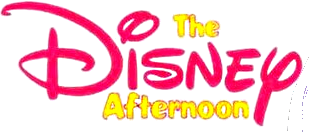Related Research Articles
Animation in the United States in the television era was a period in the history of American animation that slowly set in with the decline of theatrical animated shorts and the popularization of television animation that started in 1959, reached its peak during the 1970s, and ended around 1986. This era is characterized by low budgets, limited animation, an emphasis on television over the theater, and the general perception of cartoons being primarily for children. Due to the perceived cheap production values, poor animation, and mixed critical and commercial reception, this era is sometimes referred to as the dark age of American animation by critics.
Modern animation in the United States from 1987 to 2004 is widely referred to as the silver age of American animation. During this period, many large American entertainment companies reformed and reinvigorated their animation departments, following a dark age during the 1970s to mid-1980s. During this time, the United States had a profound effect on global or worldwide animation.
"Saturday-morning cartoon" is a colloquial term for the original animated series and live-action programming that was typically scheduled on Saturday and Sunday mornings in the United States on the "Big Three" television networks. The genre's popularity had a broad peak from the mid-1960s through the mid-2000s; over time it declined, in the face of changing cultural norms, increased competition from formats available at all times, and heavier regulations. In the last two decades of the genre's existence, Saturday-morning and Sunday-morning cartoons were primarily created and aired to meet regulations on children's television programming in the United States, or E/I. Minor television networks, in addition to the non-commercial PBS in some markets, continue to air animated programming on Saturday and Sunday while partially meeting those mandates.

Adventures of Sonic the Hedgehog is an animated series based on the Sonic the Hedgehog video game series, produced by Sega of America, DIC Animation City, Bohbot Entertainment and the Italian studio Reteitalia S.p.A. in association with Spanish network Telecinco. Airing during the autumn of 1993, 65 episodes were produced, which was syndicated by Bohbot Entertainment in the United States.

The Disney Afternoon, sometimes abbreviated as TDA, was a created-for-syndication two-hour programming block of animated television series. It was produced by Walt Disney Television Animation and distributed through its syndication affiliate Buena Vista Television. Each show from the block has aired reruns on Disney Channel and Toon Disney. Disney Channel reaired four shows on "Block Party," a two-hour block that aired on weekdays in the late afternoon/early evening.
Williams Street Productions, LLC, d/b/a Williams Street and formerly known as Ghost Planet Industries, is an American animation and live action television production studio owned by the Warner Bros. Television Studios division of Warner Bros., a unit of Warner Bros. Discovery. The studio is the in-house production arm of Adult Swim. Mike Lazzo and Keith Crofford oversaw operations for the building for most of its existence.

Jabberwocky is an American daily children's television program designed for 5–10 year-olds that went into national syndication. The original series ran Monday through Friday for over two seasons, from 1972 to 1974, on WCVB-TV in Boston. Starting in 1974, the nationally syndicated version ran weekly and was rerun in the early hours of Saturday mornings by many television stations up until the 1990s.

The Woody Woodpecker Show is a 30-minute American television series mainly composed, of the animated cartoon shorts of Woody Woodpecker and other Walter Lantz characters including Andy Panda, Chilly Willy, The Beary Family and Inspector Willoughby all released by Walter Lantz Productions. The series was revived and reformatted several times, but remained popular for nearly four decades and allowed the studio to continue making theatrical cartoons until 1972 when it shut down. It also kept the Walter Lantz/Universal "cartunes" made during the Golden Age of American animation a part of the American consciousness. The Woody Woodpecker Show was named the 88th best animated series by IGN.

King Kong, commonly referred to as The King Kong Show, is an American-Japanese animated series produced by Videocraft International and Toei Animation. ABC ran the series in the United States on Saturday mornings between September 10, 1966, and August 31, 1969. It is the first anime-based series produced in Japan for an American company.

Cartoon Quest was the name of a block of mostly animated television shows that aired on the Sci Fi Channel starting in 1992. Similar to USA's Cartoon Express, it featured reruns of various older cartoons interspersed with interstitial segments; in this case, focusing on a live-action family exploring a strange region. During its run, the block aired every Saturday from 7:00 AM to 11:00 AM EST.

The Transformers is an American-Japanese animated television series that originally aired from September 17, 1984, to November 11, 1987, in syndication based upon Hasbro and Takara Tomy's Transformers toy line. The first television series in the Transformers franchise, it depicts a war among giant robots that can transform into vehicles and other objects.

BBC Sound Effects No. 26: Sci-Fi Sound Effects is a 1981 compilation of sound effects and atmospheres created by the BBC Radiophonic Workshop. It was the second in the BBC Sound Effects series to be credited to the Workshop. It featured sounds from popular television series Doctor Who and Blake's 7, as well as effects for the first series of the radio versions of Douglas Adams' The Hitchhiker's Guide to the Galaxy and James Follett's Earthsearch. In 1991 it was re-released on CD as Essential Science Fiction Sound Effects Vol. 1. Reissued on CD with its original title and cover as part of AudioGo's "Vintage Beeb" line 4 April 2013.
Exposure is a short-film oriented science-fiction anthology series that aired on the Sci-Fi Channel between the years of 2000 and 2002. The series showcased the short sci-fi films of both unknown and known filmmakers, giving rise to the channel's own Exposure Studios. Hosted by actress Lisa Marie, the films presented a wide range of science fiction subject matter. The series received poor ratings and was canceled in the fall of 2002. The series was originally shown on Sundays at 10:00pm EST and was repeated the following Saturday at 2:00am EST, later on the time was changed to 11:00pm EST and still repeated the following Saturday well after Midnight, which probably is a major reason for the poor ratings this show received. The series also had two guest hosts. Terry Farrell would host the "Best of Season One" episode and director Kevin Smith hosted the "Star Wars Short Films Showcase".
The Houndcats is an American Saturday morning cartoon series produced by DePatie–Freleng Enterprises. The series was broadcast by NBC from September 9 to December 2, 1972, with reruns continuing until September 1, 1973. Thirteen episodes were produced.
Captain Satellite was an afternoon TV program on KTVU-2 in Oakland, California. Like many kids' shows of this period, it took advantage of the interest engendered by science fiction and the early space program. The Captain was played by Bob March, a local TV personality. His signature outfit was a helmet and a dark uniform under a light-colored, triangular vest that had a thunderbolt passing through a globe. The set was a cutaway rocket ship called the Starfinder II that blasted off each day. Guest children would co-pilot under Captain Satellite's supervision. As the ship orbited on auto-pilot, the children would participate in games to win prizes, and in live promotions. Old Thirties cartoons like Scrappy and serials would be introduced between breaks, and occasionally there were special appearances, as when The Three Stooges came to visit the Starfinder II.

The Littles is an animated television series originally produced between 1983 and 1985. It is based on the characters from The Littles, a series of children's novels by American author John Peterson, the first of which was published in 1967. The series was produced for the American broadcast network ABC by the French/American studio DIC Audiovisuel. It was post-produced by a Canadian animation studio, Animation City Editorial Services.

6 Point Harness is an American animation studio and production label of Mondo Media based in Los Angeles. It develops and produces animated television programming, feature films, commercial, music videos and web-based content. Founded by Brendan Burch in 2003, some of the studio's most notable productions include Tom Hanks' Electric City, Fox's Cosmos: A Spacetime Odyssey, MTV's Good Vibes, Nick Jr.'s Wow! Wow! Wubbzy!, Nickelodeon's El Tigre: The Adventures of Manny Rivera, Adult Swim's Apollo Gauntlet and Lazor Wulf, the animated feature The Drawn Together Movie: The Movie!, and the web series Dick Figures for the YouTube channel Mondo Media. 6PH also released Dick Figures: The Movie, an in-house production developed from the company's web series.

Major Lazer is an American adult animated television series based on the electronic music group of the same name, created by DJ and record producer Diplo with Ferry Gouw and Kevin Kusatsu. It premiered on FXX on April 16, 2015, as part of their Animation Domination High-Def (ADHD) block. After Stone Quackers, Major Lazer is the second ADHD original series to be aired on the channel after FOX had stopped its broadcast of the block itself.
References
- ↑ "Saturday Morning: Good And Bad". Los Angeles Times . Retrieved 2012-10-15.
- ↑ Hyatt, Wesley (1997). The Encyclopedia of Daytime Television. Watson-Guptill Publications. p. 258. ISBN 978-0823083152 . Retrieved 19 March 2020.
- ↑ Perlmutter, David (2018). The Encyclopedia of American Animated Television Shows. Rowman & Littlefield. pp. 352–353. ISBN 978-1538103739.
- ↑ Erickson, Hal (2005). Television Cartoon Shows: An Illustrated Encyclopedia, 1949 Through 2003 (2nd ed.). McFarland & Co. p. 490. ISBN 978-1476665993.